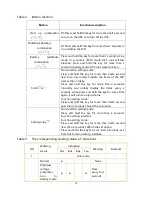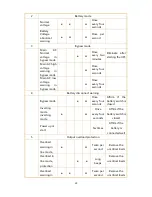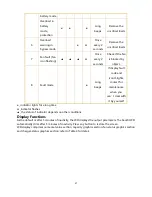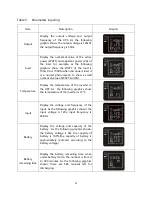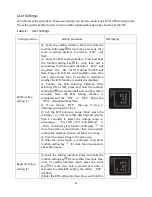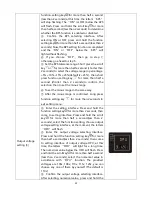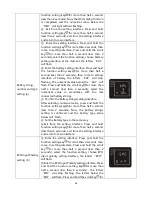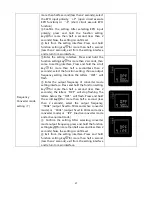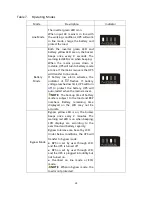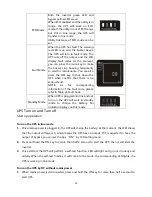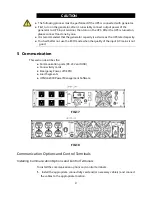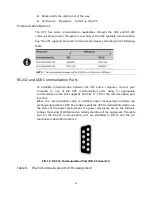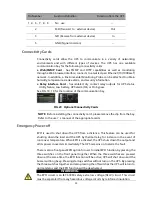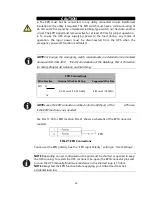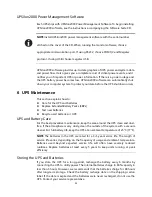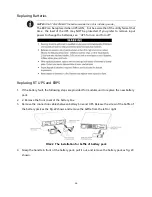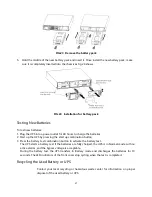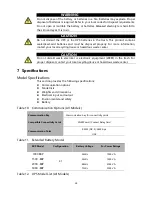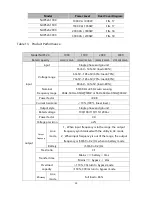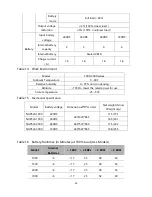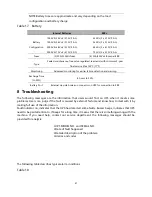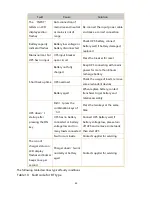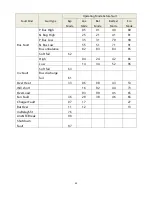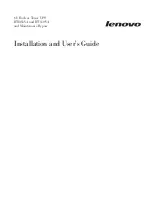
33
Pin Number Function Definition Direction from the UPS
1、4、6、7、8、9 No use --
2 R×D(Transmit to external device) Out
3 TxD (Receive from external device) In
5 GND (Signal common) --
Connectivity Cards
Connectivity cards allow the UPS to communicate in a variety of networking
environments and with different types of devices. The UPS has one available
communication bay for the following connectivity cards:
● Web/SNMP Card - has SNMP and HTTP capabilities as well as monitoring
through a Web browser interface; connects to a twisted-pair Ethernet (10/100BaseT)
network. In addition, a Environmental Monitoring Probe can be attached to obtain
humidity, temperature, smoke alarm, and security information.
● Relay Interface Card - has isolated dry contact relay outputs for UPS status:
Utility failure, Low battery, UPS alarm/OK, or On bypass.
See FIG. 18, 19 for the location of the communication bay.
FIG.20
Optional Connectivity Cards
NOTE:Before installing the connectivity card , please remove the clip from the bay.
Refer to the user’s manual of the appropriate cards.
Emergency Power-off
EPO is used to shut down the UPS from a distance. This feature can be used for
shutting down the load and the UPS by thermal relay, for instance in the event of
room over temperature. When EPO is activated, the UPS shuts down the output and
all its power converters immediately. The UPS remains on to alarm the fault.
There is also a front panel EPO option for user to initial EPO function by pressing the
three switches on the front panel together. When the three switches are pressed
down at the same time, the EPO function will be active, UPS will shut down and the
buzzer will long beep. Pressing startup switches will not turn on the UPS. By pressing
the three switches together and also pressing the off switches the UPS will return to
normal status and the EPO function will be deactivated.
WARNING
The EPO circuit is an IEC 60950 safety extra low voltage (SELV) circuit. This circuit
must be separated from any hazardous voltage circuits by reinforced insulation.

